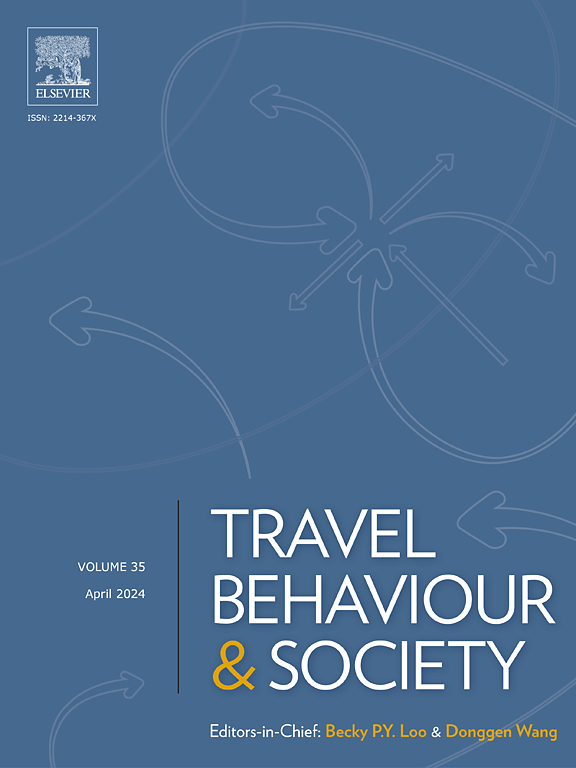休闲和购物旅行的趋势:从 COVID-19 流行前到流行后
IF 5.7
2区 工程技术
Q1 TRANSPORTATION
引用次数: 0
摘要
2020-2022 年全球 COVID-19 大流行促使休闲和购物旅行模式发生重大转变。本研究利用 2017 年、2019 年和 2023 年进行的普吉特海湾地区旅行研究的数据来调查这些变化。通过严格的统计分析(包括条件混合过程建模),我们的实证结果表明,在后大流行时代,休闲旅行和店内购物的出行比例增加了,而休闲活动的车辆行驶里程减少了。每天远程工作时间超过六小时的人,其休闲和购物的出行比例往往更高,但他们在这些活动中的汽车行驶距离却更短。在大流行病的刺激下,包裹递送量激增,对店内购物旅行产生了补充效应,但似乎替代了一些休闲活动。这些研究结果为政策制定者提供了宝贵的见解,使他们能够调整交通基础设施和公共服务,以适应后大流行病时代不断变化的需求。本文章由计算机程序翻译,如有差异,请以英文原文为准。
Trends in leisure and shopping travel: From pre- to post-COVID-19 pandemic
The global COVID-19 pandemic of 2020–2022 precipitated a significant transformation in leisure and shopping travel patterns. This study leverages data from the Puget Sound Regional Travel Study conducted in 2017, 2019, and 2023 to investigate these changes. Utilizing rigorous statistical analyses, including conditional mixed-process modeling, our empirical results indicate that the share of trips made for leisure travel and in-store shopping increased in the post-pandemic era, while the vehicle miles traveled for leisure activities decreased. Individuals with telework arrangements exceeding six hours per day tended to make a higher proportion of their daily trips for leisure and shopping, yet they covered shorter distances by automobile for these activities. The surge in package delivery, stimulated by the pandemic, exhibited a complementary effect on in-store shopping travel but appeared to substitute some leisure activities. These findings provide valuable insights for policymakers aiming to adapt transportation infrastructure and public services to the evolving needs of the post-pandemic era.
求助全文
通过发布文献求助,成功后即可免费获取论文全文。
去求助
来源期刊

Travel Behaviour and Society
TRANSPORTATION-
CiteScore
9.80
自引率
7.70%
发文量
109
期刊介绍:
Travel Behaviour and Society is an interdisciplinary journal publishing high-quality original papers which report leading edge research in theories, methodologies and applications concerning transportation issues and challenges which involve the social and spatial dimensions. In particular, it provides a discussion forum for major research in travel behaviour, transportation infrastructure, transportation and environmental issues, mobility and social sustainability, transportation geographic information systems (TGIS), transportation and quality of life, transportation data collection and analysis, etc.
 求助内容:
求助内容: 应助结果提醒方式:
应助结果提醒方式:


